Add incredible, fresh flavor to steak, poultry, fish or veggies with this Low FODMAP Chimichurri Sauce! Originating in Argentina and Uruguay, chimichurri is a healthy, uncooked sauce that's easy to make in a food processor and gives dishes an upgrade of fresh, zesty flavor! This chimichurri sauce recipe is adapted for low FODMAP based on a recipe by Primavera Kitchen and is naturally Paleo, Whole30, Keto, and low carb.
Jump to:
What is chimichurri sauce?
Traditional chimichurri verde sauce consists of fresh minced parsley, oregano, garlic, red wine vinegar, red pepper flakes and olive oil. Some chimichurri variations use cilantro instead of parsley or a combination of parsley and cilantro as well as onion, lemon juice, cumin, and other spices. Chimichurri is commonly put on steak but also goes well with chicken, fish, and even roasted vegetables and is often used to baste or as a marinade for grilled meats.
Chimichurri also comes in a red version, chimichurri rojo, in which red bell pepper and tomato are added to the rest of the ingredients. This version seems less popular than the green and I've never tried it but may have to someday.
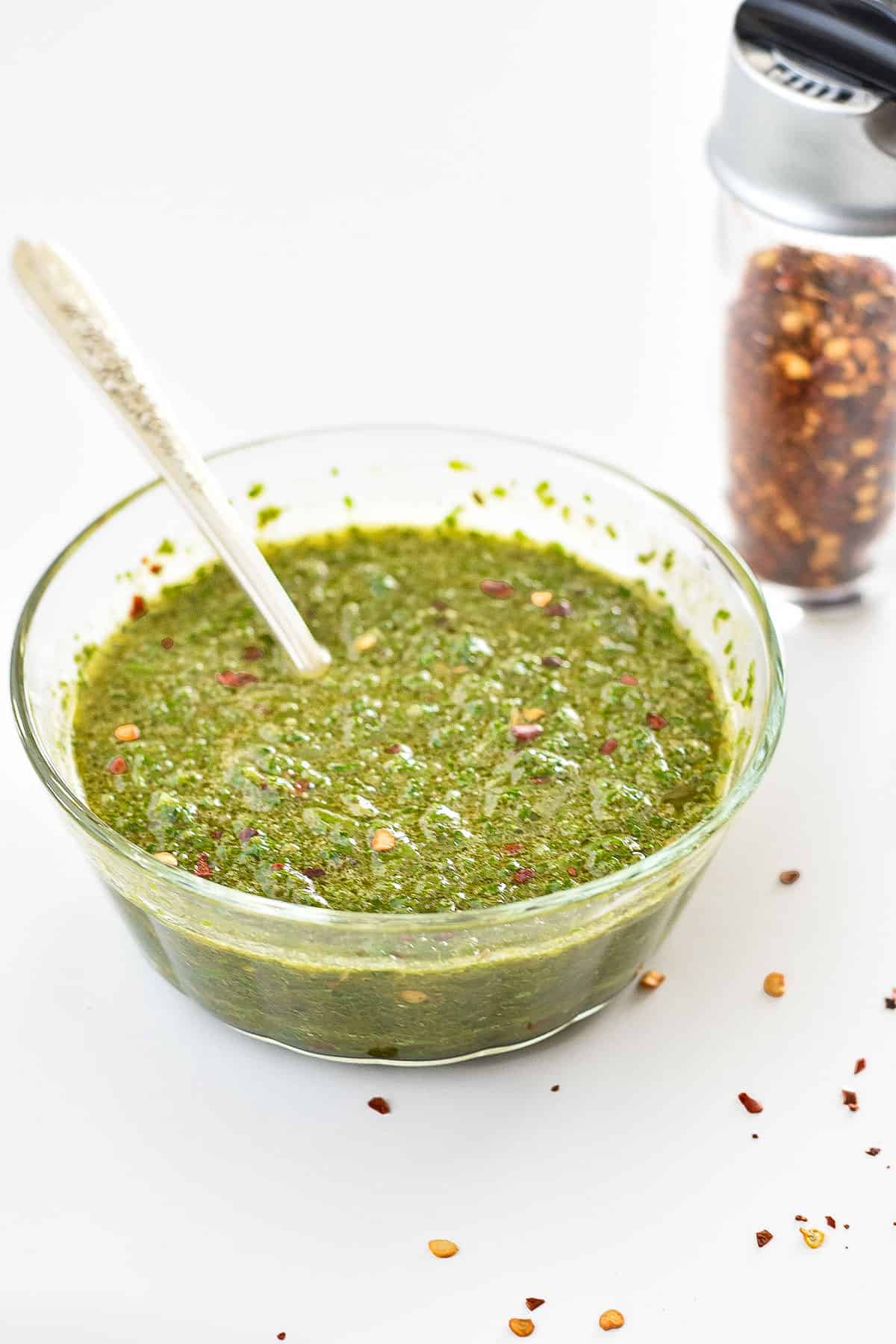
Low FODMAP Chimichurri
I was first introduced to chimichurri during my first round of Whole30 through this Chimichurri Shrimp Broccoli Skillet recipe on Primavera Kitchen. This recipe is one of the best Whole30 recipes I've ever encountered, and once I started eating low FODMAP in addition to Paleo, I adapted it for low FODMAP. You can find my adapted recipe here: Low FODMAP Chimichurri Shrimp and Broccoli Skillet.
Chimichurri is also naturally Paleo and Whole30 compliant as well as Keto and low carb. I can't imagine there is any version out there that wouldn't be, but I guess you never know.
Necessary Equipment
The equipment I use to make this low FODMAP chimichurri recipe includes:
- Food processor
- Citrus juicer
- Spatula
- Chopping board
- Chopping knife
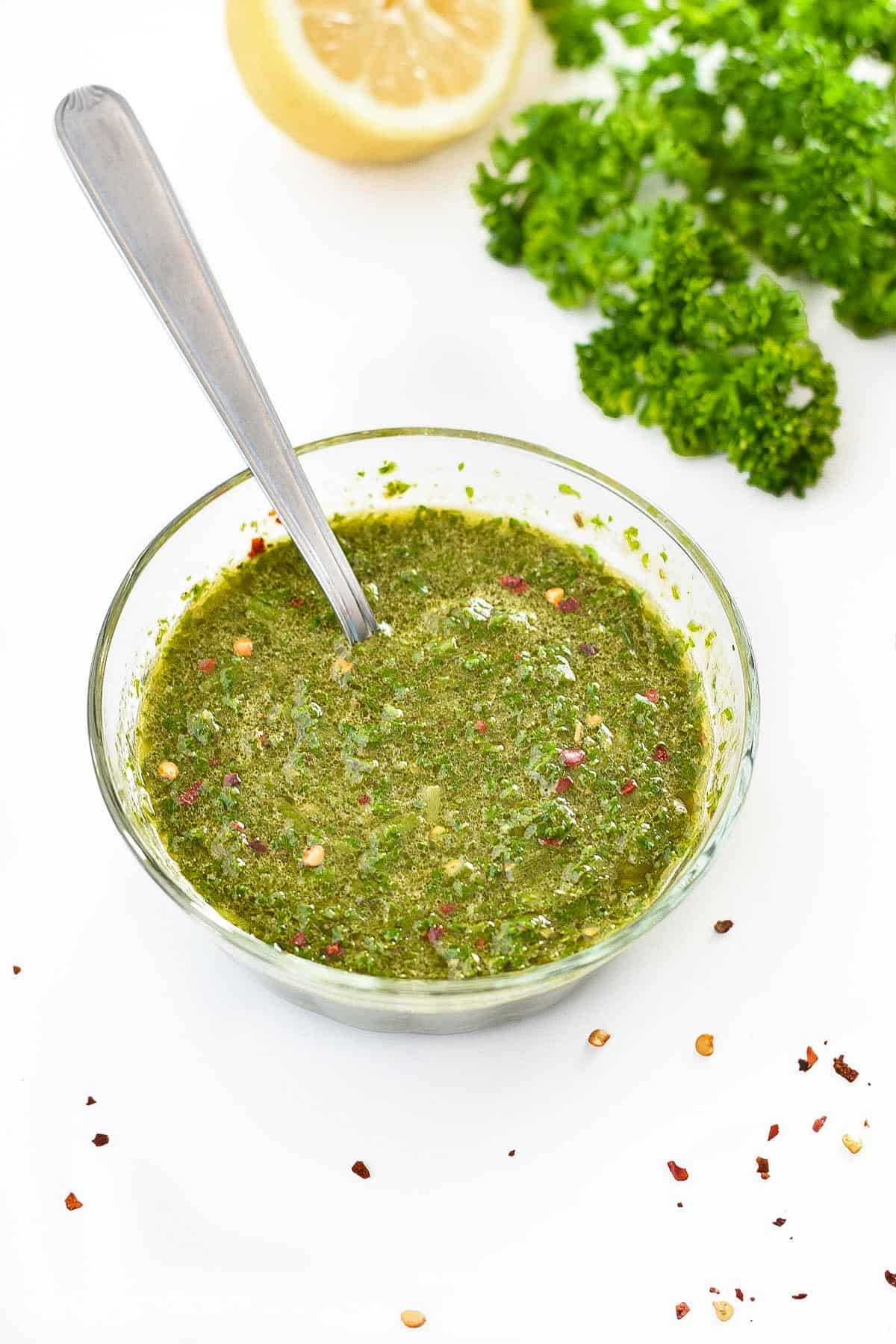
Low FODMAP Chimichurri Sauce: Ingredients & Success Tips
Herbs
For this low FODMAP chimichurri, I use parsley, but cilantro or a combination of cilantro and parsley can also be used. I personally prefer the taste of parsley over cilantro, but it's delicious either way.
I also highly recommend using fresh oregano leaves over dried oregano as fresh tastes SO MUCH BETTER. Dried oregano can be used in a pinch, however.
Scallions
In lieu of red onion, I use the green tops of scallions (a.k.a. green onions) to make this recipe low FODMAP. I don't recommend putting the green tops of scallions into the food processor whole as they get all wonky, rather roughly chopping them into 1" pieces and then adding them to be processed.

Garlic-infused & Extra Virgin Olive Oils
To add some garlicy flavor without the actual garlic, I use a combination of garlic-infused olive oil and extra virgin olive oil.
Acidity
To add acidity, I prefer to use both white wine vinegar and freshly-squeezed lemon juice. Red wine vinegar is more traditionally used, but I much prefer the taste of white wine vinegar with shrimp in my adapted Low FODMAP Chimichurri Shrimp and Broccoli Skillet recipe. Although I haven't tried it, red wine vinegar would probably go best with steak and other red meats.
Seasonings
I season the chimichurri with salt, black pepper, and red pepper flakes; however, the red pepper flakes are optional if you're not a fan of heat or react poorly to spicy food. The use of red pepper flakes in the photos may make it appear as though this chimichurri will be spicy; however, I would consider it only mildly spicy at ½ teaspoon. You can add more or less (or omit altogether) depending on your desired heat level.
Food Processing vs. Hand Chopping
If you want the low FODMAP chimichurri to look prettier, I recommend hand chopping everything instead of chopping it in a food processor. It takes way longer but does look a lot nicer.

Serving Options
You can this low FODMAP chimichurri in the following ways:
- Spooned on top of meat, poultry, fish, or veggies
- Mixed into skillet meals, such as my Low FODMAP Chimichurri Shrimp and Broccoli Skillet
- Basted onto grilled meats, poultry, fish, or veggies
- As a marinade for meats, poultry, fish or veggies
Storage
This low FODMAP chimichurri sauce is best served fresh but can be stored in an air-tight container in the refrigerator for up to 3 days.
Print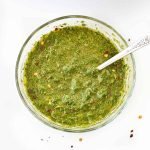
Low FODMAP Chimichurri Sauce (Paleo, Whole30, Keto)
- Total Time: 5 minutes
- Yield: About 1 cup 1x
- Diet: Vegan
Description
This easy Low FODMAP Chimichurri Sauce recipe gives an upgrade of fresh, zesty flavor to steak, poultry, fish or veggies! Low FODMAP and naturally Paleo, Whole30, Keto, and low carb.
Ingredients
- 1 cup fresh parsley leaves (firmly packed)
- ½ cup scallions (green tops only, roughly chopped)
- 1 tablespoon fresh oregano leaves (firmly packed or 1 tsp dried oregano leaves)
- ¼ cup extra virgin olive oil
- 3 tablespoons garlic-infused olive oil
- 2 tablespoons white wine vinegar or red wine vinegar
- ½ tablespoon lemon juice
- ½ teaspoon sea salt
- ¼ teaspoon freshly ground black pepper
- ½ teaspoon red pepper flakes (optional*)
Instructions
- Add all the ingredients to a food processor. Process on low for 3 minutes, scraping the sides of the bowl with a spatula after about 30 seconds. Allow to rest about 10-15 minutes to allow the flavors to meld while you prepare the rest of your meal. If you want the chimichurri to look prettier, you can hand chop everything and mix in a small bowl.
- Serve on or as a marinade for grilled or cooked steak, poultry, fish, roasted veggies or shrimp, such as my Low FODMAP Chimichurri Shrimp and Broccoli Skillet.
- This low FODMAP chimichurri sauce is best when served fresh; however, leftovers can be stored in an air-tight container in the refrigerator for up to 3 days.
Notes
- Red pepper flakes: Although red pepper flakes are low FODMAP in small quantities, some people respond poorly to them for non-FODMAP related reasons. Pay attention to how your body reacts to spicy food and consult your doctor or dietitian before adding red pepper flakes to this recipe if you have concerns about how you may react to it.
- Servings: makes about 1 cup or eight 2-tablespoon servings.
- Adapted from Primavera Kitchen
- Prep Time: 5 minutes
- Category: Condiments and Seasoning Mixes
- Method: Food Processor
- Cuisine: Argentinian-Inspired







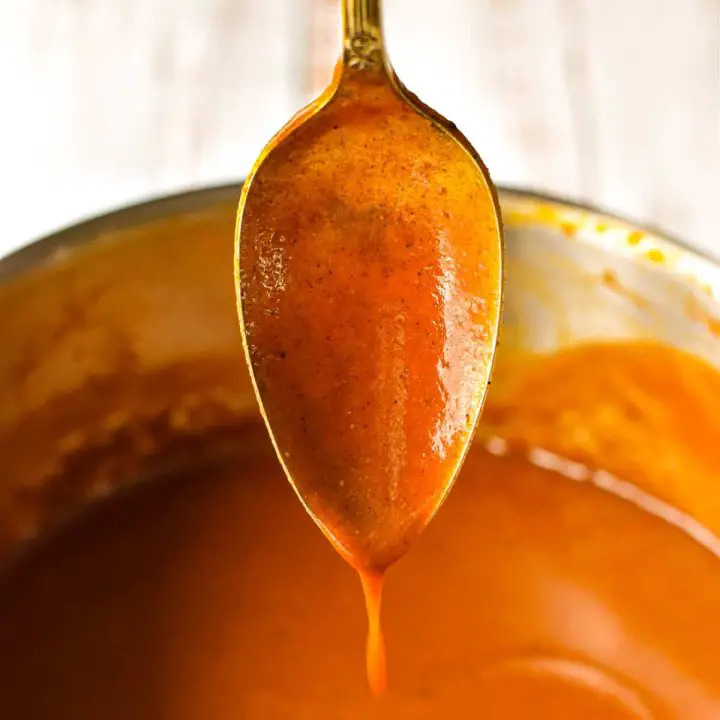
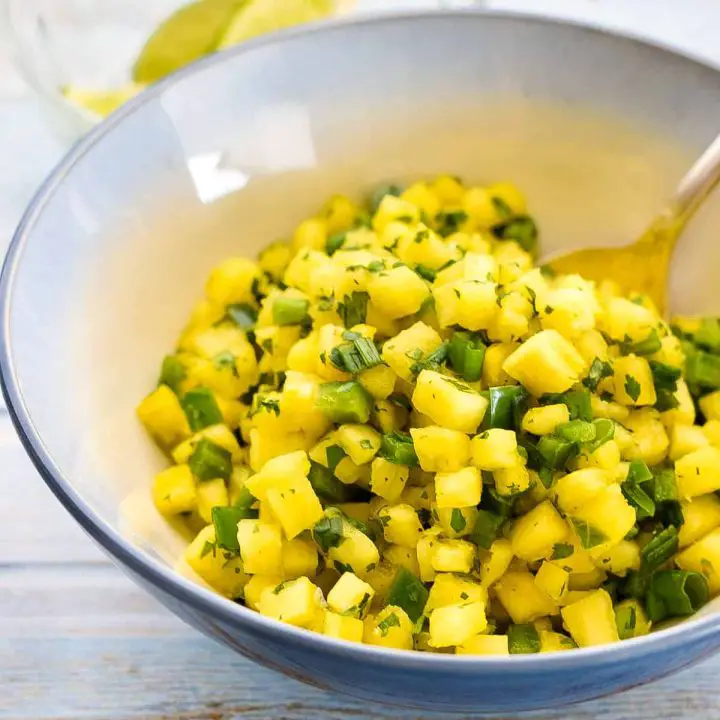

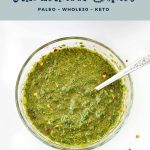
Amber says
Can I use lemon juice instead of vinegar?
Gail says
Hi Amber! Yes, I think that would work. I'd taste it after it's all put together and add more lemon juice than the amount of vinegar called for in the recipe if it's not acidic enough. If the taste of olive oil is too strong, you probably need more.
Pamela says
Loved this. I’d never had Chimichurri sauce before. So good on everything!
Gail says
So glad you liked the chimichurri, Pamela! Thanks so much for trying it!